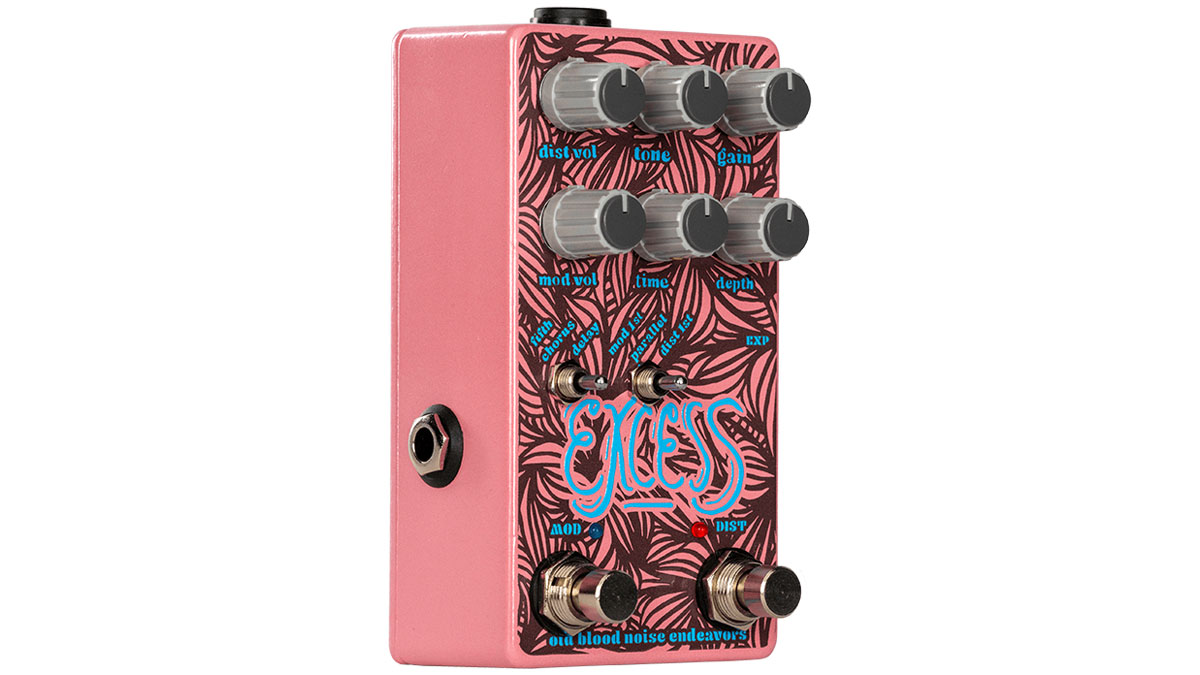Old Blood Noise Endeavors upgrades the Excess V2 Distorting Modulator with more controls and a smaller enclosure
Distortion, chorus and delay in one compact stompbox for the pedalboard adventurist…
Old Blood Noise Endeavors is one of the great pedalboard mixologists of our time, identifying less obvious but inspired effects combinations and selling the to the musically adventurous guitar player.
Released in 2017, its Excess distortion/chorus/delay was one such example of its approach, augmenting a distortion pedal with chorus and modulation for some off-road sounds. Or was it a chorus/delay pedal augmented by distortion?
Either way, that concept has been refreshed, modernised, with the Excess V2 taking that same distortion, modulation and delay and housing it in a more compact enclosure, and adding extra controls so you can tease ever-more creative sounds from a unit that has distortion on tap, but also chorus, delay and harmonised delay.
Once more, it is a dual-footswitch design, with modulation on the left, distortion on the right, each highlighted by blue and red LEDs respectively. There are six dials arranged across the top of the pedal, with the top three Volume, Tone and Gain dedicated to the distortion, and the bottom Volume, Time and Depth controlling the modulation and delay.
The distortion has plenty of range on it. You can run it as a low-gain overdrive pedal or dime it for saturated, hard-clipping distortion. As for the modulation, the Excess V2 presents a moveable feast of sounds, with a three-way toggle switch to select between delay, chorus and Fifth – a harmonized delay in which your signal is repeated a perfect fifth above the note your are playing.
When in the Fifth mode, the harmonised – or pitch-shifted – delay can get weird as you turn the Depth control clockwise. This adds repeats like the feedback control on a regular delay would, the and the Excess V2 starts adding fifths to your original repeats, deepening the harmony.
Want all the hottest music and gear news, reviews, deals, features and more, direct to your inbox? Sign up here.


The chorus mode is more straight down the line. Rate adjusts the speed of the LFO, Depth adjusts the width of the chorus, and the more you turn both clockwise, the more intense the effect gets. Delay, meanwhile, has a short maximum time of 125ms, and is designed for comb filter, doubling and slapback effects. If you max out the Depth control, the Excess V2 will threaten to self-oscillate, but will stop just short of that.
All this presents you with plenty of options to dial in electric guitar tones that range from the conventionally processed to plain old weird.
But there’s a second toggle switch that allows you to run the modulation section into the distortion, with the potential for creating harmonically intense musical textures, in parallel for a notable volume boost and both effects effectively cohabiting but not speaking to each other, or with distortion feeding the modulation section for standard operation. Of course, pedals such as this question what “standard operation” means when it comes to guitar tone.
There is an internal trimpot that adjusts the mix of the modulation section. The factory setting is 50:50 wet/dry, but the wet signal can be cranked all the way up for pitch vibrato or weirder delay, or dialled back for more subtlety. Finally, there’s an expression pedal input so you can control Rate and Depth parameters on the fly.
The Excess V2 Distorting Modulator is available now, priced £199 / $209. See Old Blood Noise Endeavors for more details.
Jonathan Horsley has been writing about guitars and guitar culture since 2005, playing them since 1990, and regularly contributes to MusicRadar, Total Guitar and Guitar World. He uses Jazz III nylon picks, 10s during the week, 9s at the weekend, and shamefully still struggles with rhythm figure one of Van Halen’s Panama.
